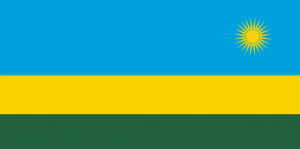Language/Kinyarwanda/Grammar/Negation
Hi Kinyarwanda learners! 😊
In this lesson, we will focus on the concept of negation in Kinyarwanda language. Negation is a grammatical term that represents the expression of negation or denial.
Negation particle
In Kinyarwanda language, the most common way of expressing negation is by using the particle "nta". This particle is used to negate any sentence, whether it is affirmative or interrogative. The particle "nta" is always placed before the verb in a sentence.
Let's see some examples:
| Kinyarwanda | Pronunciation | English |
|---|---|---|
| Nta nzaruhutse | n̪tʰa n̪zaɾuhut͡se | I haven't eaten yet. |
| Nta yandi maso | n̪ta jan̪di maso | I don't have any other eyes. |
| Nta mbyeyumvira | n̪ta mb̪jɛjumviɾa | You don't understand me. |
Other ways of negation
Aside from "nta", there are other ways of negating sentences in Kinyarwanda. These ways include:
Turi
"Turi" is used as a negation particle when the sentence ends with a verb in "-ira". It indicates that the action has not been initiated yet.
For example:
- Nturi byemewe? (Haven't you arrived yet?)
Ntukongora
"Ntukongora" adds emphasis on negation or unwillingness to do something. It is more like a refusal.
For example:
- Ntukongora kuba ubuzima buzoza? (Won't you live for long?)
Double negatives
In Kinyarwanda, double negatives is allowed when expressing negation. However, only one negative particle is needed to convey the sense of negation.
For example:
- Sinshaka nta zina ririra. (I don't want any bad name.)
In this sentence, "nta" and "sinshaka" are both negative words, but only "nta" is needed to convey the sense of negation.
Dialogue
- Person 1: Uvuga icyongereza? (Do you speak English?)
- Person 2: Oya, nta cyongereza ngomba. (No, I don't speak English.)
- Person 1: Uri kumwe na Didier? (Are you with Didier?)
- Person 2: Oya, nta Didier ngomba. (No, I'm not with Didier.)
Cultural tips
In Rwanda, negation is a crucial part of communication. It is used in everyday conversation, especially when answering negative questions. For example, if someone asks you "Nitwa Didier?", and your name is not Didier, you would answer by saying "Oya", which means "No".
Also, in Rwanda, it is customary to use the word "nta" to counter the usual greeting "Amakuru?", which means "How are you?". Your answer will depend on the context of the conversation, but if you want to say "I'm not fine", you would say "Nta nziza".
Practice
Practice writing simple sentences and then negating them with the particle "nta". You can also practice using "turi" and "ntukongora" to negate sentences effectively.
Where to learn more
To improve your Kinyarwanda Grammar, you can also use the Polyglot Club website. Find native speakers and ask them any questions!
Sources
- 9.) The Verb: The Copulative - Learning Kinyarwanda
- Grammar: Types of negation in Kinyarwanda and Idioms based on ...
➡ If you have any questions, please ask them in the comments section below.
➡ Feel free to edit this wiki page if you think it can be improved. 😎

